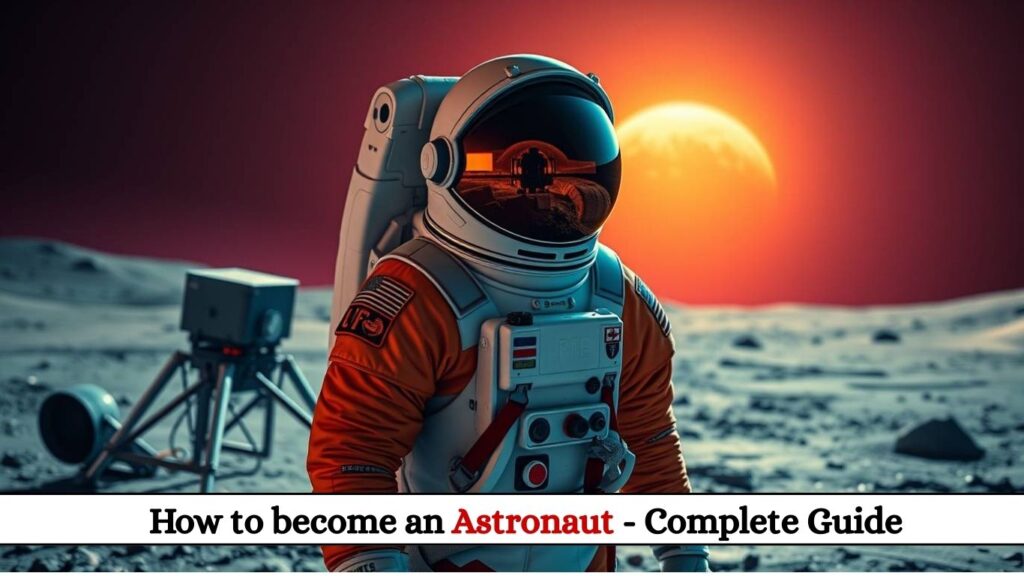
Introduction
Becoming an astronaut is a dream for many, but only a select few achieve this extraordinary career. Astronauts are highly trained professionals who travel to space to conduct experiments, maintain spacecraft, and push the boundaries of human exploration. In this comprehensive guide, we’ll explore the history of astronauts, their roles and responsibilities, salary expectations, qualifications, how to get started, and the future of space travel.
History of Astronauts
The Early Days of Space Exploration
The term “astronaut” comes from the Greek words “astron” (star) and “nautes” (sailor), meaning “star sailor.” The journey of astronauts began during the Cold War space race between the U.S. and the Soviet Union.
- 1957: The Soviet Union launched Sputnik 1, the first artificial satellite.
- 1961: Yuri Gagarin became the first human in space aboard Vostok 1.
- 1969: NASA’s Apollo 11 mission landed Neil Armstrong and Buzz Aldrin on the Moon.
Modern Space Exploration
Today, astronauts work with agencies like NASA (U.S.), Roscosmos (Russia), ESA (Europe), CNSA (China), and ISRO (India). They conduct research on the International Space Station (ISS) and prepare for future missions to the Moon and Mars.
Roles and Responsibilities of an Astronaut
Astronauts have diverse responsibilities, depending on their mission. Here are some key roles:
1. Mission Specialists
- Conduct scientific experiments in microgravity.
- Operate robotic arms for satellite deployment.
- Perform spacewalks (Extravehicular Activities – EVAs).
2. Pilots & Commanders
- Fly spacecraft like SpaceX’s Crew Dragon or Boeing’s Starliner.
- Ensure crew safety and mission success.
3. Payload Specialists
- Work with private companies or research institutions.
- Focus on specialized experiments like biotechnology or astrophysics.
4. Flight Engineers
- Maintain spacecraft systems (life support, computers, etc.).
- Troubleshoot technical issues in space.
Astronaut Salary: How Much Do They Earn?
Astronaut salaries vary based on experience and agency:
| Agency | Entry-Level Salary (USD) | Experienced Salary (USD) |
|---|---|---|
| NASA | $66,000 | $144,566 (Senior Astronaut) |
| ESA | €60,000 (~$65,000) | €85,000 (~$92,000) |
| Roscosmos | 120,000 RUB (~$1,300) | 600,000 RUB (~$6,500) |
| ISRO | ₹12 LPA (~$14,400) | ₹24 LPA (~$28,800) |
Note: Private companies like SpaceX and Blue Origin may offer higher salaries for commercial spaceflight roles.
Qualifications Required to Become an Astronaut
1. Educational Requirements
- Bachelor’s degree in STEM fields (Engineering, Physics, Biology, Mathematics).
- Advanced degrees (Master’s/Ph.D.) improve selection chances.
2. Physical & Medical Requirements
- Height: 5’2″ to 6’3″ (NASA standards).
- Vision: 20/20 (correctable with glasses).
- Blood Pressure: Below 140/90.
- No major illnesses (heart disease, severe allergies).
3. Work Experience
- NASA: Minimum 3 years of professional experience or 1,000 hours of piloting jets.
- Military pilots (especially test pilots) have an advantage.
4. Skills Needed
- Problem-solving under pressure.
- Teamwork & leadership.
- Fluency in Russian (for ISS missions).
How to Become an Astronaut: Step-by-Step Guide
Step 1: Obtain a STEM Degree
- Study aerospace engineering, astrophysics, or medicine.
- Consider military training (Air Force/Navy pilots have a higher selection rate).
Step 2: Gain Relevant Experience
- Work in aviation, research labs, or space-related industries.
- Apply for NASA’s astronaut candidate program or other space agencies.
Step 3: Pass the Selection Process
- Written exams (technical & psychological).
- Physical & medical tests.
- Intense interviews & team exercises.
Step 4: Complete Astronaut Training (2+ Years)
- Survival training (water, wilderness).
- Spacewalk simulations (Neutral Buoyancy Lab).
- ISS systems training.
Step 5: Get Assigned to a Mission
- Wait for mission assignment (may take years).
- Undergo mission-specific training.
Future Scope of Astronauts
1. Moon Missions (Artemis Program)
- NASA plans to land the first woman and next man on the Moon by 2025.
- Lunar bases for long-term research.
2. Mars Exploration
- SpaceX’s Starship aims for human missions to Mars by 2030s.
- NASA’s Perseverance Rover is preparing for human settlement.
3. Commercial Spaceflights
- Companies like SpaceX, Blue Origin, and Virgin Galactic are hiring astronauts for private missions.
- Space tourism is becoming a reality.
4. Deep Space Exploration
- Missions to asteroids, Europa (Jupiter’s moon), and beyond.
Conclusion
Becoming an astronaut is a challenging yet rewarding journey. With advancements in space technology, opportunities are expanding beyond government agencies to private companies. If you dream of space travel, start by focusing on STEM education, gaining relevant experience, and applying to astronaut programs.
The future of space exploration is bright—will you be part of it?
By following this guide, you’ll be well on your way to understanding what it takes to become an astronaut and the exciting future awaiting space explorers! 🚀













Post Comment